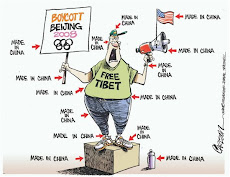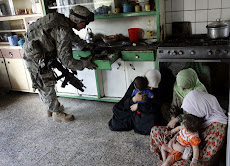 A ward for tuberculosis and HIV patients in Juba Hospital in southern Sudan. (Lynsey Addario for The New York Times)
A ward for tuberculosis and HIV patients in Juba Hospital in southern Sudan. (Lynsey Addario for The New York Times)When W.H.O. started a drug surveillance project in 1994, he said, “the general thinking was that multiple-drug-resistant TB would never be a real problem since it was felt to be confined to immunosuppressed patients.” A decade ago, when W.H.O. first received reports of 9 to 10 percent rates of multiple-drug-resistant TB in some areas, many scientists thought the figure was inaccurate due to a misclassification that mixed new, previously treated and chronic cases together. Experts also said higher rates were not possible, Dr. Raviglione said, but “we see now it is possible, it tells you they are really doing something wrong in places where this form of TB is spreading.” Overall, about one in 20 new cases of tuberculosis in the world is resistant to first line drugs, which translates into nearly 500,000 of the 9 million new tuberculosis cases that are detected each year, according to the W.H.O. survey, which involved 90,000 patients in 81 countries.
The World Health Organization says that there is a financial gap of $2.5 billion of the estimated $4.8 billion needed this year for overall TB control in low- and middle-income countries. For the first time, the survey included analysis of extensively drug-resistant tuberculosis, or XDR-TB, a virtually untreatable form of the respiratory disease because the causative bacteria are resistant to virtually all the most effective anti-TB drugs. XDR-TB has been reported in 45 countries, but because few countries have the necessary laboratories to detect it, the data were limited. The true extent of the problem remains unknown in some pockets of the world because only six countries in Africa, the region with the world’s highest incidence of TB, could provide drug resistance data for the report, Dr. Raviglione said. Other countries in the region could not conduct surveys because they lack the laboratory equipment and trained personnel needed to identify drug-resistant TB. Outbreaks of drug resistance are likely going undetected, Abigail Wright, the principal author of the W.H.O. report, said. Although the W.H.O. report highlights the extent of drug resistance, Dr. Raviglione said there were successes where governments invested in control measures. He cited the Baltic countries of Estonia and Latvia as “the model” because they were the drug resistant tuberculosis “hot spots” 13 years ago. Today, following a substantial investment and a sustained assault on multiple-drug-resistant TB, rates in these two countries are stabilizing and rates of new TB are falling.
By Lawrence K. Altman
++++++++++++++++++++++++++++++++++++++++++++++++++
Disclaimer
No responsibility or liability shall attach itself to either myself or to the blogspot ‘Mozlink’ for any or all of the articles/images placed here. The placing of an article does not necessarily imply that I agree or accept the contents of the article as being necessarily factual in theology, dogma or otherwise.
Mozlink





















































No comments:
Post a Comment